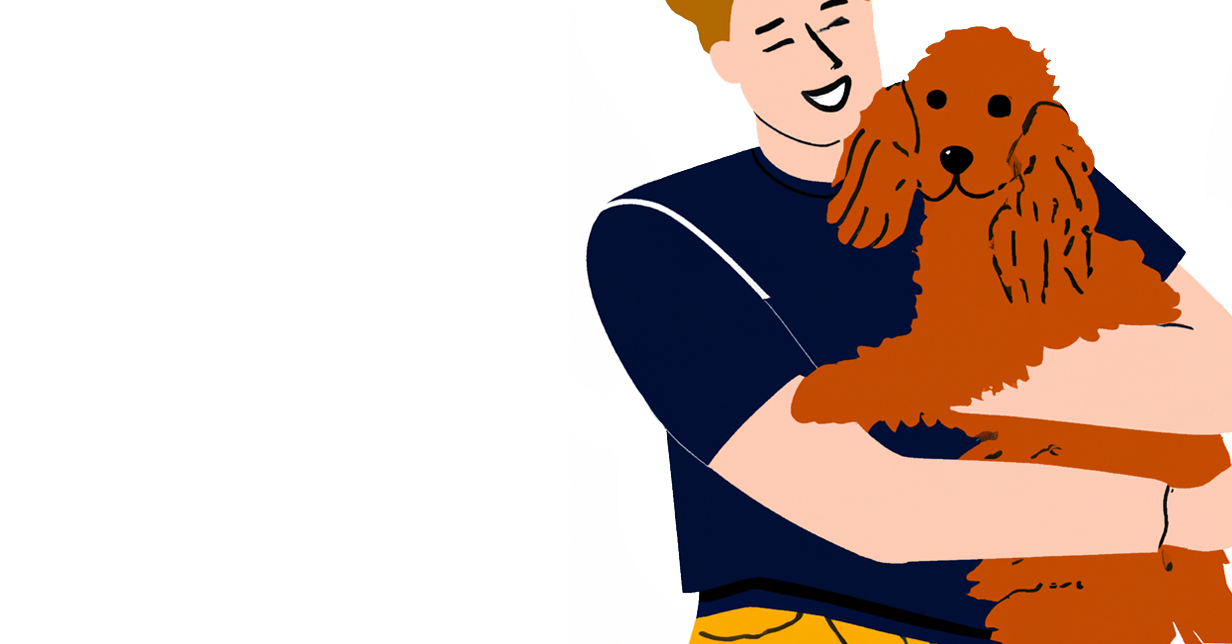
A Guide to Understanding Your Dog's Thoughts and Emotions
Share
As dog owners, it's essential for us to understand our furry companions on a deeper level. While dogs can't speak our language, they communicate through various cues and behaviors that reveal their thoughts and emotions.
In this post, we will provide you with a comprehensive guide to understanding your dog's thoughts and emotions. By learning to interpret their body language, vocalizations, and social behavior, you can develop a stronger connection with your canine friend, promote their well-being, and enhance the quality of your relationship.
Decoding body language
A dog's body language speaks volumes about its emotional state. From tail wagging to ear position and overall posture, each movement has meaning. Understanding cues like relaxed body language, play bows, and submission postures can indicate a content and confident dog.
Conversely, signs of fear or aggression, such as tucked tails, raised hackles, and rigid posture, should be recognized and addressed appropriately. By becoming fluent in your dog's body language, you can respond to their needs and ensure their emotional well-being.
Vocalizations and communication
Dogs communicate through various vocalizations, including barking, growling, whining, and howling. Each vocalization conveys different emotions and intentions. Barking may signify alertness, excitement, fear, or territorial behavior. Growling can indicate discomfort or a warning signal.
Whining may express anxiety, attention-seeking, or anticipation. Pay attention to the context, pitch, and intensity of vocalizations to better understand your dog's emotional state. Combining vocalizations with body language and environmental cues will help you decipher the intended message and respond accordingly.
Understanding tail wagging
Contrary to popular belief, tail wagging doesn't always indicate happiness. A wagging tail can convey a range of emotions and intentions. The position, speed, and direction of the wag provide valuable insights.
A loose, broad wag often signifies happiness and friendliness, while a stiff, high wag may indicate alertness or potential aggression. A tucked tail suggests fear or submission. Observe your dog's tail wagging in different contexts to interpret its emotional state accurately.
Interpreting facial expressions
A dog's face is a window into their emotions. Pay attention to their eyes, ears, mouth, and overall expression. Relaxed, soft eyes and an open mouth typically indicate contentment. Narrowed eyes, a tense mouth, or bared teeth may suggest anxiety or aggression.
Learn to read the subtleties of their facial expressions, such as raised eyebrows or a wrinkled forehead, to understand their feelings. By recognizing the messages conveyed through their expressions, you can respond appropriately and provide comfort or reassurance when needed.
Socialization and behavior
Dogs are social animals, and their behavior in social situations can reveal their thoughts and emotions. Observe how your dog interacts with other dogs and humans. Positive socialization includes appropriate play behavior, relaxed body language, and friendly greetings.
Note any signs of fear or aggression in specific situations or towards certain individuals. Understanding your dog's behavior in social settings helps you ensure they feel safe, comfortable, and well-adjusted.
Environmental sensitivities
Dogs can be sensitive to different environmental stimuli. Pay attention to their reactions to loud noises, unfamiliar objects, crowded places, or specific locations. Some dogs may display fear, anxiety, or aggression in certain situations, while others may be more confident and curious.
Recognizing your dog's sensitivities and triggers allows you to create a safe and secure environment for them, minimizing stress and promoting emotional well-being.
Individual personality
Every dog has a unique personality with specific traits and preferences. Some dogs may be naturally outgoing and sociable, while others may be shy or reserved. Observe your dog's individual characteristics, including their energy levels, play styles, and response to different experiences.
By understanding their personality, you can tailor your interactions, training methods, and activities to suit their needs, ultimately fostering a deeper connection and ensuring their emotional fulfillment.
The power of observation and bonding
Building a strong bond with your dog requires attentive observation and active participation in their lives. Spend quality time with your dog, engaging in activities they enjoy.
Pay close attention to their cues, responses, and body language during these interactions. The more you observe and understand their thoughts and emotions, the better equipped you'll be to meet their needs and provide a nurturing and fulfilling environment.
Conclusion
Understanding your dog's thoughts and emotions is an ongoing journey that requires dedication and attentiveness. By paying close attention to their body language, vocalizations, and social behavior, you can decipher what they are feeling and create a deeper bond based on trust and empathy.
It's important to recognize that every dog has a unique personality, which requires personalized attention and care. Seeking the guidance of a puppy trainer in Portland can be immensely helpful in this process. Your efforts will undoubtedly be rewarded with a happier and more fulfilling relationship with your four-legged companion.







